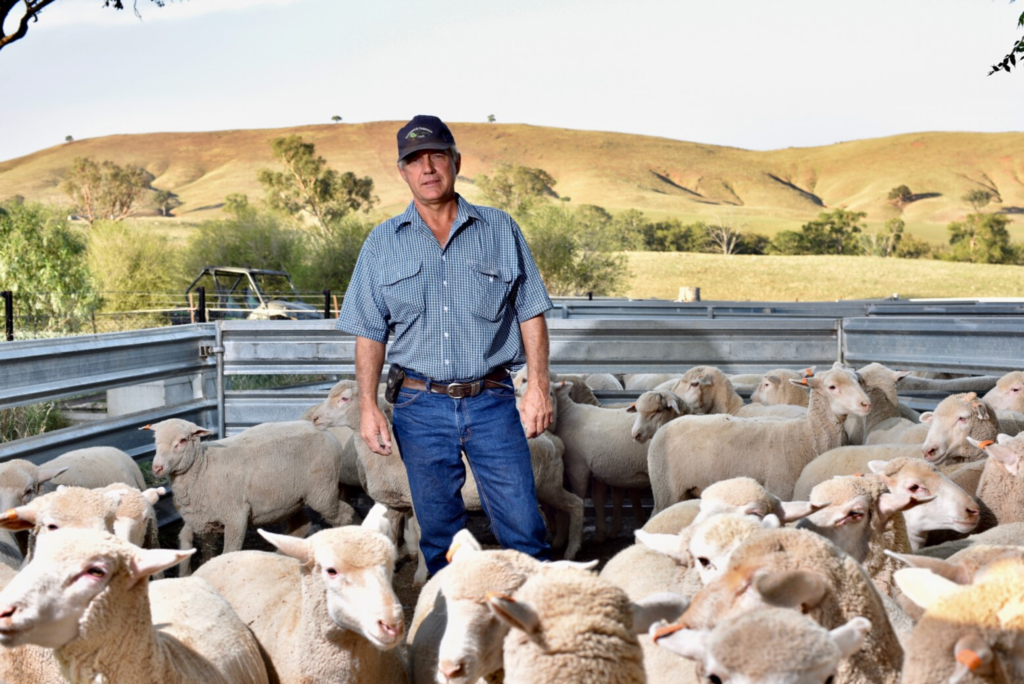Manildra Stockfeed DDGS Wheat Pellets have been a “game-changer” at the Bailey family’s lamb fattening operation in Central West NSW the past few years.
With more than 30 years’ experience in the industry, Andrew and Annette Bailey’s lamb production business, with their eldest son Nick and wife Belinda, consistently turns off over 30,000 prime fat lambs annually.
They introduced Manildra Stockfeed DDGS Wheat Pellets into their feeding regime three years ago and Mr Bailey said it had “been a game-changer”.
“Inclusion of the DDGS Wheat Pellets has resulted in consistently higher weight gains – meaning less time on feed resulting in a quicker turnover of lambs,” he said.
“We introduce the DDGS Wheat Pellets at the start of the feeding process in the induction paddocks, where the lambs spend 7-10 days with purpose-built feeders. This is the most challenging time of the process, as the lambs adjust to the change in diet.
“This is followed by more concentrated feeding in smaller paddocks, where our lambs are fed for about 30 days.” Fattening lambs for both domestic trade and export markets, Mr Bailey said the feed ration comprised Manildra Stockfeed DDGS Wheat Pellets with additional oaten hay, canola hay, whole cereal grain, and a rumen buffer.
“Weight gain can vary substantially according to lamb breeds and their backgrounds,” he said.
“Our lambs are gaining weight consistently at all times – even in the often-difficult induction period – and the ample yeast component of the DDGS Wheat Pellets is a major factor in our success,” he said.
As an advocate for a total mixed ration that includes the lambs’ total daily roughage requirements, Mr Bailey said the result was lambs remained healthy and content throughout the feeding process.
“A percentage of our lambs’ diets includes roughage, in the form of hay, to complement the pellets.”
“With oaten hay and canola hay in the ration, by customising the feeding systems, we can ensure a constant and consistent feed without feeder blockage or wastage.”
“The ration is extremely palatable with the addition of the DDGS Wheat Pellets, which substantially reduces wastage at the foot of the feeder and mortality rates.”
Manildra Stockfeed National Manager Tim Wirth said the Baileys’ remarkable results had been consistent with feedback from other lamb producers intensively feeding with DDGS Wheat Pellets throughout NSW, Queensland and Victoria.
“The inclusion of the DDGS Wheat Pellets delivers an excellent source of protein and energy for the lambs’ diet,” said Mr Wirth.
Mr Bailey said use of DDGS Wheat Pellets extended to conditioning ewes and increasing milk production post-lambing, a feed practice that also assisted in backgrounding sucker lambs onto hard feed in preparation for weaning into induction paddocks.
Pellets a ‘Game-Changer’ for Fat Lamb Production
